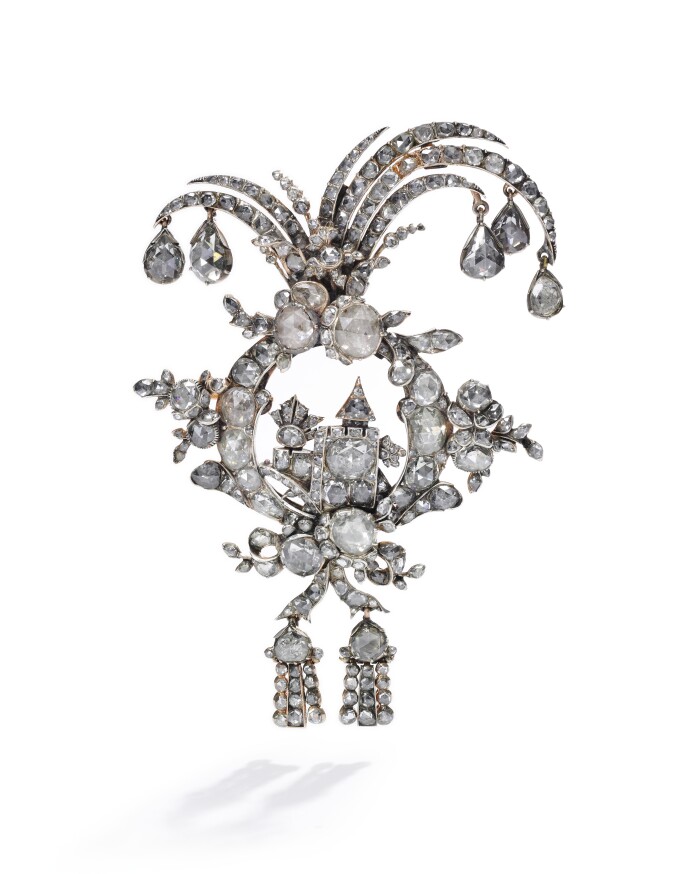From humble beginnings as safety pins to elaborate diamond adornments, brooches have come a long way since the Romans utilised the ‘fibula’ to hold their cloaks together. Just last week, the Duchess of Cambridge chose to wear a significant brooch to the celebration of 100 years of the Royal Air Force (RAF), to show her status as Honorary Air Commandant.
The first recorded brooches were made of twisted thorns and flint, followed by tough metal pins in the Bronze Age. By the Byzantine period, brooches were undergoing an ornamental makeover with designs morphing from the purely functional to decorative jewels.
Throughout the centuries, brooches have had a special ability to reflect not only the fashions of the time, but also deeper cultural influences. The mourning brooches of the 18th and 19th centuries, for example, reveal the Georgian and Victorian fascination with mortality, bereavement and the mysticism of the after-life. The love between Queen Victoria and Prince Albert signalled a long affair with ‘Sweetheart’ brooches, which were exchanged as symbols of affection and later gifted by soldiers as they left for WWI.
Elsewhere, the beautiful micro-gemstone mosaics of ‘Grand Tour’ brooches signified a widening of the world for late 19th century gentry as they journeyed to Venice, Florence and Rome, while the enduring popularity of cameo brooches kept mythological legends alive with carved stone, and pearls. By the 20th century, the Aigrette ‘feather’ brooch set with diamonds was a timeless choice, following in the footsteps of the en tremblant style where bouquets of gemstones delicately moved to catch the light.
Today, the Royal family continue to wear brooches of great cultural and historical significance. The brooch worn by Kate Middleton, Duchess of Cambridge, at the RAF service was a diamond and ruby Dacre brooch that she received in 2015 when she was made Honorary Air Commandant of the RAF. Until then the brooch had been awarded to the annual best female cadet but it was decided that women should be rewarded in the same way as male cadets and presented with a sword instead.

And it is almost impossible to discuss iconic brooches without looking at the private collection of Her Majesty Queen Elizabeth II. The 18.8 carat Cullinan V Heart Brooch, created by Garrard, and reportedly one of the Queen’s favourites, is surpassed in rarity only by a brooch containing the 94.4 carat Culinan III diamond and the 63.6 carat Cullinan IV diamond, inherited by the Queen in 1953.

Pair these infamous diamond designs with the Queen’s other prized brooches - Queen Victoria’s trio of diamond-set bows, the Prince Albert sapphire brooch and the Duchess of Cambridge pearl brooch - and it’s clear that this royal collection is perhaps the finest in the world.





